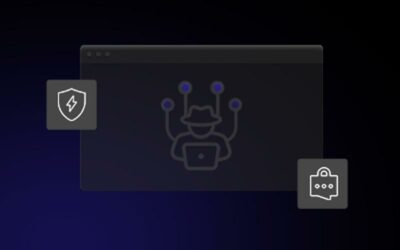Over the past few years, smart devices have taken over the consumer technology market. They are versatile, agile, and simply cool to use. But what if we told you that they might also be putting you and your family at risk?
Though you might have been assured that smart devices use every possible level of protection, professionals claim they are quite easy to breach. In an interview with the News 5 Cleveland channel, an ethical hacker said that it could easily be done with a small device that you can buy anywhere for just $15:
The hacker revealed that one of the common mistakes that people make when using smart devices is using a popular password. He mentioned that hackers have a list of such passwords, and it can take him minutes to hack into the entire smart home system.
But besides making your password more complicated, what can you do to protect your smart devices?
Let’s take a look.
1) CREATE A GUEST WI-FI NETWORK
Unfortunately, protecting your Wi-Fi with a password, no matter how complicated, is not enough. Anyone who enters your house can get access to your network if you allow it.
For example, let’s say you’re giving private French lessons, and many of your students come to your home. They want to use online dictionaries but cannot do it without a Wi-Fi connection, so you give them the only password to your main network. And that’s how you compromise your security, not even knowing about it.
Or, let’s say, a person you don’t know came to fix your computer. They get access to your Wi-Fi seemingly to download some additional drivers, but, in reality, they could be downloading malware.
To prevent such situations from happening, you need to set up a guest Wi-Fi network. Here’s how you do it:
- Enter your router’s IP address. This can be done on any browser.
- Choose Guest Network settings. They can be found under Wireless Settings.
- Enable the guest access. Choose the name for the guest network, a password, and save the changes.
These three steps are already enough to double the protection of your smart devices from unwanted access and other hazards.
2) ENABLE TWO-STEP AUTHENTICATION
Today, many smart devices offer this security method, but users can still opt-out. They don’t want to share their personal information, such as a cell phone number, fearing the risk of exposure.
However, rejecting two-step authentication can put more important data at risk, such as your credit card details. Besides, sharing your cell phone with a smart device for the sake of better security doesn’t compromise this data in any way.
Apart from using your mobile phone to confirm your identity, smart devices also sometimes use other types of two-step authentication:
- app-generated codes
- app-based authentication
- email confirmation
- recovery codes (in case you cannot confirm your identity with any other method)
You can enable two-step authentication in the settings of each of your smart home devices. Don’t worry, they will only ask you to go through this step occasionally, especially if you haven’t been home for some time.
Nevertheless, don’t blindly trust two-step authentication as the only method to keep you safe from hackers. If you use it but still have an unsafe password or give access to your Wi-Fi network to everyone, two-step authentication will bring you no extra security. On the contrary, you’ll be exposing even more of your personal data.
3) KEEP THE SOFTWARE UP TO DATE
Lastly, to stay safe using smart devices, you need to make sure they’re functioning properly. One of the ways to ensure their smooth performance is keeping the software they use up-to-date.
Companies that create smart devices constantly work on improving them. Apart from introducing new features, they also keep track of any common malware or viruses that harm these devices. Thus, software updates also usually include security patches and bug fixes to protect you from these threats.
So, if you want to ensure data security, keep an eye on these updates. They usually come automatically, but if you haven’t received any notifications for a long time, check your smart device’s settings.
Keep in mind, however, that when such notifications come, they should contain license information from the manufacturer and which changes the update will make. If you see an update, but it doesn’t tell you anything specific, don’t accept it, it may be malware.
ONE LAST THING
In the interview that we mentioned earlier, the hacker mentioned that private users make a mistake by not reading the Terms and Conditions when installing smart devices. There, they can find information on the levels of protection that the device has as well as the warning of actions that can compromise security.
Keep this in mind and also try the tips that we shared with you in this article. And, of course, be mindful of what you’re downloading from the internet. After all, no matter what you use to protect yourself from hacker attacks, your security is always in your hands.



